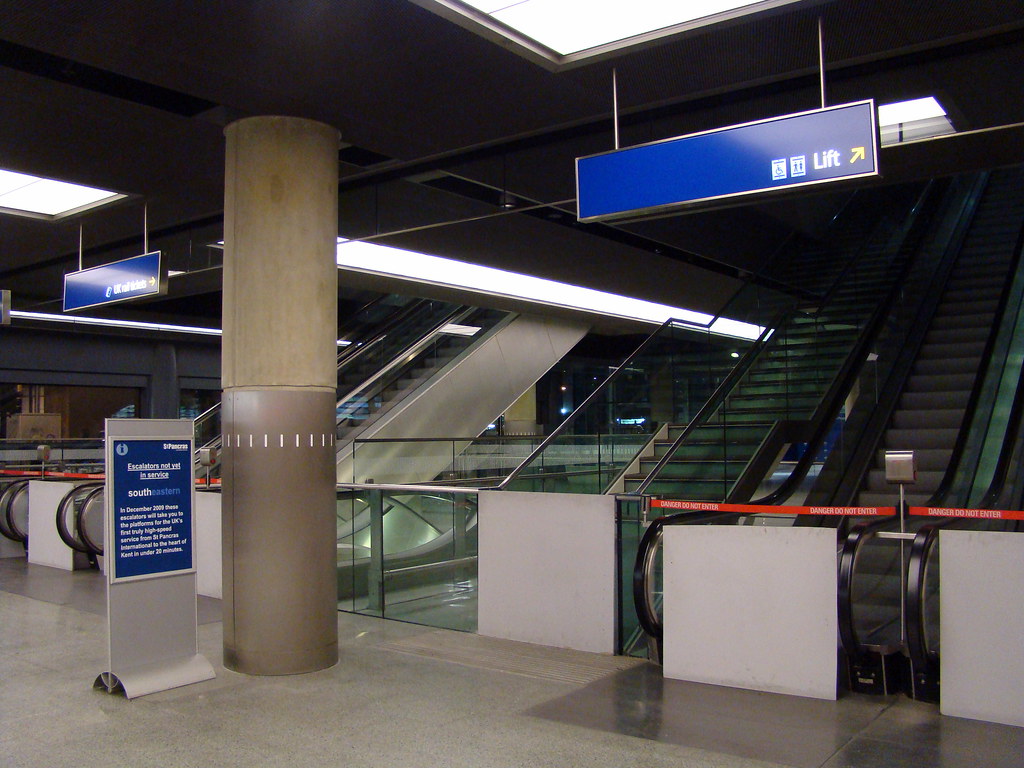Woolwich Arsenal DLR Extension
The latest extension to the DLR network opened a few days ago. The DLR platforms are constructed beneath the North Kent Line platforms. The DLR frequency is a train every 10minutes of 6tph, with journey times of 28minutes to Bank (the Square Mile), Canary Wharf or Stratford (& Olympic Park) in 19 minutes, and 6 minutes to London City Airport.
Despite being only a few days old, trains are said to be full when leaving the station which illustrates the demand to access the Dockland regeneration sites in Canary Wharf and Stratford.
The North Kent Line platforms are used by trains going to London Charing Cross and London Cannon Street (10tph) and was originally opened back in 1849.
Woolwich is the site for the shooting events during the 2012 Olympics.
The Crossrail station for Woolwich will be situated slightly to the north of the station.
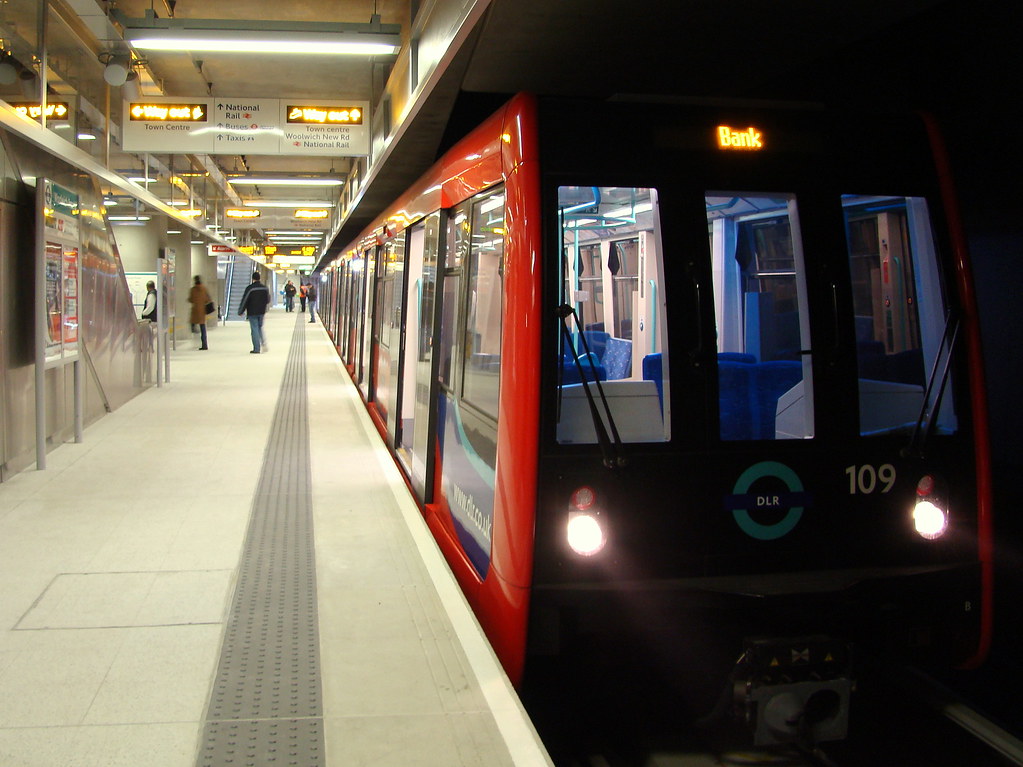



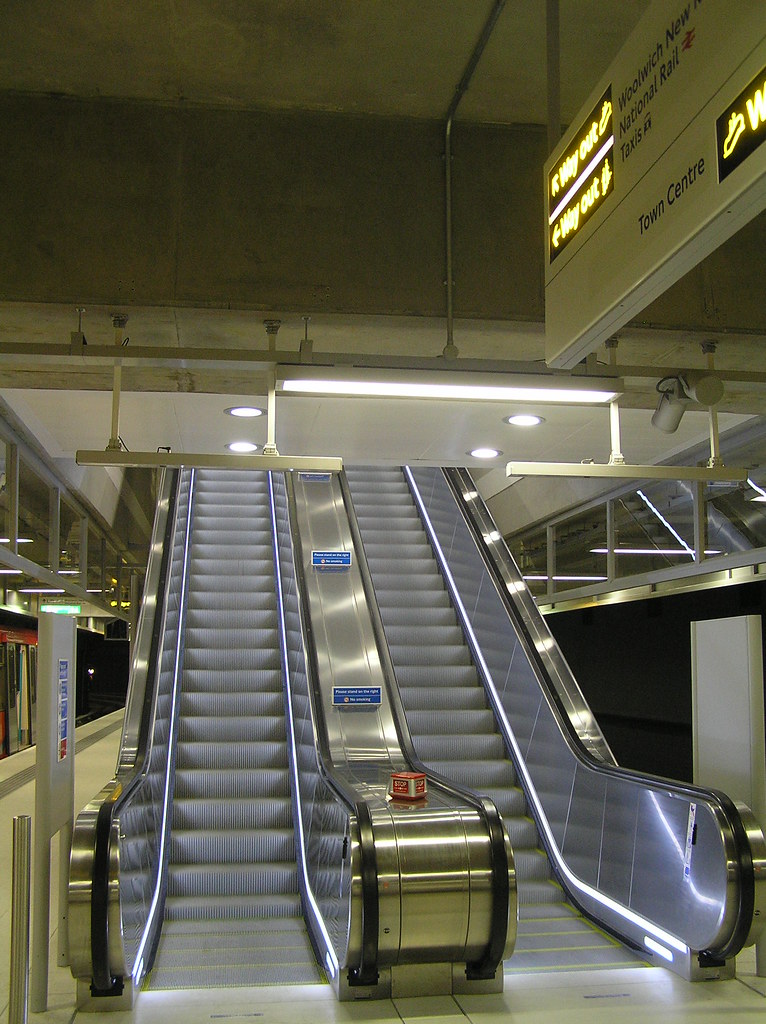
 Youtube Video (from London City Airport going eastbound to Woolwich Arsenal):
http://uk.youtube.com/watch?v=XYDhMNaWFfw
Youtube Video (from London City Airport going eastbound to Woolwich Arsenal):
http://uk.youtube.com/watch?v=XYDhMNaWFfw
Due to the DLR being a fully automated train (ie there isn't a driver and no driver cab), you can ride at the front of the train. This is one of the best ways to see how the Docklands are changing.
London City Airport Station
The opening of the DLR Woolwich Arsenal station marks the completion of the final stretch of the London City Airport Extension. The first segment was built on an elevated structure, while the final stretch to Woolwich Arsenal was via two new tunnels under the Thames.
The station provides connections to Canary Wharf, Stratford and the Square Mile.
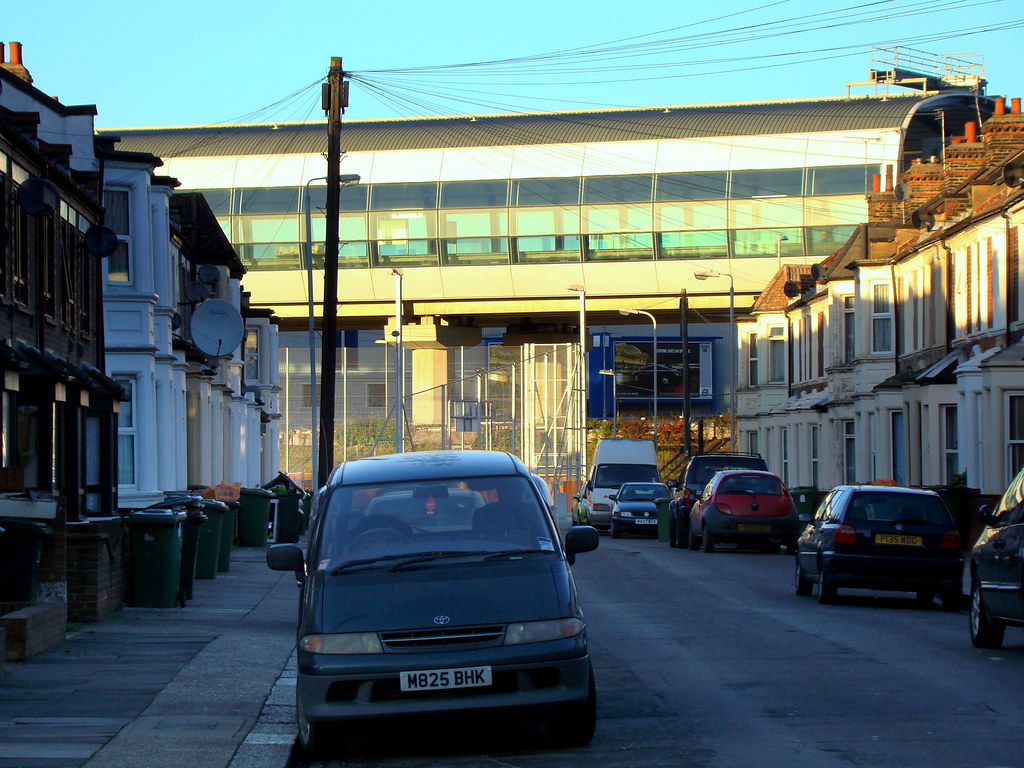
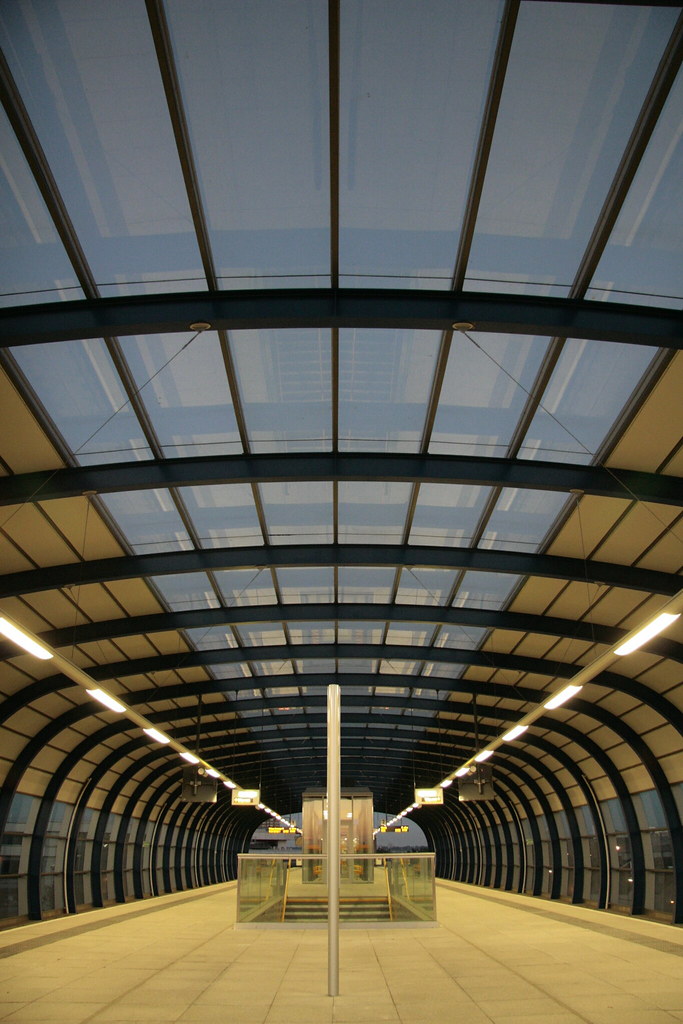 Crossrail handed keys to Tottenham Court Road sites
Crossrail handed keys to Tottenham Court Road sites
Filed 19/01/09 http://www.transportbriefing.co.uk/story.php?id=5473
Land required to expand Tottenham Court Road Underground station to handle Crossrail services passes to the Transport for London subsidiary’s control today (19 January).
The property acquisition notices issued in October 2008 come into effect and will see landmark properties, including the London Astoria music venue (pictured above, left), transfer to Crossrail control.
Work will begin immediately to prepare the buildings for demolition. This will start in the spring and is scheduled to finish in mid-2010.
Earlier this month a number of local bus services were re-routed for up to seven years to allow the redevelopment of Tottenham Court Road station.
The station is one of the most congested on the Tube network and is used by approximately 150,000 people a day which is expected to exceed 200,000 a day when Crossrail opens in 2017. Expansion plans include creating a ticket hall six times the size of the existing one.
Richard Parry, London Underground director of strategy and service development, said:
“While the entire Crossrail project will be the biggest construction project in Europe, no one should underestimate the scale and extent of the work that will take place at Tottenham Court Road.
“This will be one of the biggest station redevelopment projects ever undertaken in central London. By 2017, Tottenham Court Road station will be one of the most important stations in the West End serving both London Underground and Crossrail.”
To deliver a bigger station, the space under the road and the pavement where the current ticket hall is located needs to be enlarged - but is full of sewers and pipes carrying electricity, telecommunications and water. London Underground is continuing with a programme of utility diversions and other preliminary works into 2009.
New station entrances will be built at Dean Street for additional access to Crossrail, at the corner of Oxford Street, and on a new piazza outside the Centre Point building.
Once the redevelopment of the station is complete, the existing cramped station entrances will be replaced with new, more spacious openings to accommodate the hundreds of thousands of passengers who will enter and exit the station each day.
As the project continues there will be two main construction sites. One will be at Charing Cross Road split between Centre Point and across the road from the current station.
The second site is on Dean Street where one of the new Crossrail entrances and ticket halls will be located. This work site will commence from late 2009.
Before demolition starts, archaeologists from the Museum of London will assess and appraise the buildings in accordance with guidance from English Heritage. This will provide a record of the area for future generations.
Heathrow runway ready by 2015 under new laws
The Times, January 16, 2009
http://business.timesonline.co.uk/to...cle5527512.ece
The new runway at Heathrow could be built five years earlier than expected as the Government rushes the planning process to prevent opponents from blocking the expansion.
Ministers yesterday asked BAA to submit a planning application as soon as possible with a view to opening the new runway and terminal as early as 2015. Previously, the Government had suggested the runway would not open until 2020.
The £9 billion expansion, which will increase Heathrow’s capacity by almost 50 per cent, is likely to be one of the first projects considered by the new Infrastructure Planning Commission, due to be appointed this year. The commission will make the final decision, rather than the current practice of a planning inspector making a recommendation to ministers. The inquiry will be much shorter and simply consider whether the application complies with the Government’s aviation policy, giving only limited scope to objectors.
There were angry scenes in the Commons as Geoff Hoon, the Transport Secretary, announced that he was approving the runway.
Far from conceding defeat, the environmental and heritage groups opposing the runway pledged to step up their campaign, both in the courts and by direct action at airports.
The Conservatives repeated their pledge to scrap the runway if they win the next election. However, blocking the plans will become more difficult once the planning process is under way. Lord Adonis, the Transport Minister, told The Times: “It is possible it could open in 2015 if the planning process is completed in time.”
He said that the Government’s decision to reject plans for more intensive use of the existing runways made it imperative to build the third one as soon as possible. He admitted that the absence of extra capacity in the next few years meant that Heathrow would continue to operate more than 99 per cent full and be prone to long delays after even minor incidents.
BAA welcomed the decision and said it was confident of being able to comply with environmental conditions. Mr Hoon said that airlines would only be allowed to use half the capacity of the new runway, or 125,000 flights a year, until 2020.
Flights would rise after that if total emissions from UK aviation were on course to fall below 2005 levels by 2050. He said that a £250 million fund to boost sales of electric cars would more than make up for emissions from the expansion. Mr Hoon also announced a study into a high-speed rail line linked to Heathrow but did not make a commitment to building it.
Greenpeace said: “If Gordon Brown thinks this is a green runway he must be colour-blind.” It said that more than 20,000 people had offered to invest in the piece of land it has bought on the site of the proposed expansion.
 DRMM beats five to win Brunel Museum
DRMM beats five to win Brunel Museum
21 January, 2009, Clive Walker, http://www.bdonline.co.uk/story.asp?...de=3131976&c=2
DRMM has won a competition to redevelop the Brunel Museum in south London, trumping five other practices including Fat and Ash Sakula.
The winning proposal includes creating better public areas around the Rotherhithe museum and safe public access to a 15m diameter vent shaft and former stairwell — closed since 1865 — which leads to Brunel’s Thames Tunnel.
The tunnel, running between Rotherhithe and Wapping, is currently being upgraded as part of the East London Line extension.
Part of dRMM’s solution is a suspended mobile platform allowing public access to all parts of the museum — old and new.
Explaining the scheme’s rationale, practice director Alex de Rijke said: “DRMM’s proposal consists of several ambitious site-specific responses, inspired by the Brunel legacy of inventive lateral design.”
Brunel Museum competition judges included museum trustee and CZWG director Piers Gough, museum director Robert Hulse, Brunel Trust engineer Bryn Bird and treasurer Molly Lowell.
The decision to choose dRMM was “unanimous” according to Gough. “The Brunel Museum chose dRMM ahead of their rivals due to their clever grasp of the situation and its opportunities, coupled with their own technologically imaginative passion,” he said.
 East-West Rail Link clearance work gets underway
East-West Rail Link clearance work gets underway
Filed 19/01/09 http://www.transportbriefing.co.uk/story.php?id=5472
Around 20 kilometres of disused railway line between Bletchley and Claydon Junction stations in Buckinghamshire will be cleared of scrub, brambles and overgrown vegetation so that survey and investigation work can be carried out for the design development phase of the East-West Rail project.
Starting on 26 January, the clearance will take two to three weeks and some will be done with manual equipment, although the more densely overgrown areas will need to be cleared with chainsaws and tractor mounted flails. All of the waste materials will be left chipped and spread on the site.
Patrick O’Sullivan, East-West Rail project manager at Milton Keynes Partnership, said: “Once the site clearance is completed, the engineers and surveyors will begin their technical surveys and ground investigations to enable the design work of the new track and associated railway engineering works for the western section of the East-West Rail project.”
The design development work is being undertaken by Atkins which was recently appointed to carry out the design work (Guidance for Railway Investment Projects - GRIP Stage 4) on the western section of the East-West Rail project.
Milton Keynes Partnership is the lead member of the East-West Rail Consortium, a group of local authorities and government agencies with an objective of securing a new rail route from East Anglia to Oxford via the Milton Keynes South Midlands growth area.
Croxley rail extension nominated by regional assembly
Filed 20/01/09 http://www.transportbriefing.co.uk/story.php?id=5481
The extension of the London Underground Metropolitan line to Watford Junction station inched a step forward this week.
Along with the redevelopment of Watford Junction station, the two schemes, promoted by Hertfordshire County Council, were backed by the East of England Regional Assembly’s Regional Planning Panel. The county council has welcomed the news that the regional assembly will advise the Department for Transport to fund the two schemes, which will reduce congestion and boost the economy in the Watford area.
The £162m Croxley Rail Link scheme would see the Metropolitan Line re-routed and extended to Watford Junction, where it will meet Network Rail services. Tube trains will run from Watford Junction to central London every 10 minutes.
New stations would be provided at Ascot Road and Watford West, with improvements made to the existing stations at Watford High Street and Watford Junction. This would improve public transport for residents, improve access to the Harlequin Centre and the hospital, and reduce congestion.
The separate £38m Watford Junction Station Interchange scheme, which involves a major redevelopment of the station, has also been backed by the regional assembly. The station will get more drop-off points, easier pedestrian access and better bus and coach facilities. New car parks will be built along with a new link road.
Stuart Pile, Executive Member for Highways, Transport and Rural Affairs, said: “I’m delighted that the regional assembly will be pushing the government to fund these schemes. We need to invest in our transport infrastructure if we’re going to support our economy and reduce congestion. The Department for Transport bases its funding decisions on the regional advice, so we’re optimistic that we’ll get the go-ahead and that the line can open in 2017.”
Hertfordshire County Council is promoting the Croxley Rail Link scheme, working with London Underground and Network Rail. The scheme will be funded with £136m from the DfT and a further £26m from Hertfordshire County Council and partners including London Underground.
The government asked the East of England Regional Assembly for advice on which major transport schemes to fund in the East of England, which includes Hertfordshire. The assembly’s Regional Planning Panel has considered the schemes and its recommendations will now be considered by the full regional assembly as formal advice to the government. The government will make a decision on which schemes to fund, based on this advice.
Rail electrification plan for Midland and Great Western
Filed 16/01/09 http://www.transportbriefing.co.uk/story.php?id=5464
Railway lines from London to Bristol and the East Midlands are set to be upgraded to support electric trains under the first route electrification programme since Labour came to power and Britain's railways were privatised.
Transport Secretary Geoff Hoon this week told the House of Commons that the Department for Transport and Network Rail have been jointly examining the case for further rail electrification which, he said, can have advantages on busy parts of the rail network, given the lower carbon emissions and better performance of electric trains.
Great Western Main Line

The announcement is the first time the government has made a commitment to route electrification - and follows a decision to set up a working group to examine the issue last year (Transport Briefing 29/10/08). A decision on whether or not to electrify the most heavily used parts of the Great Western Main Line from London Paddington and the Midland Main Line north from Bedford, where the wires currently end, to Kettering, Leicester, Nottingham and Sheffield, will be announced later this year.
This decision is likely to accompany an announcement on the deployment of the new generation of intercity express trains which will replace the 1970s rolling stock currently in use on the Great Western, Midland and East Coast main lines. Ministers are considering bids for a range of power cars from two consortia - the Express Rail Alliance, which includes Canadian rolling stock manufacturer Bombardier and German engineering giant Siemens, and Hitachi, the Japanese company supplying trains for the new domestic High Speed 1 services which is working with John Laing Projects and Developments and Barclays.
The inter-city express programme calls for an all-new design of environmentally friendly train which will be available with electric and diesel power cars along with a third hybrid variation suitable for use on routes which are partly electrified. With the East Coast line already electrified a decision to add wires to other routes earmarked for the new trains could ease deployment and cut manufacturing costs by minimising the different power car designs required and allowing electric vehicles to be specified for most services.
Midland Main Line

Announcing the plans for electrification Transport Secretary Geoff Hoon also pledged to back other rail improvements which would support the expansion of Heathrow Airport. He said a new company - High Speed 2 - has been set up to examine options for building a new high speed rail line linking London with the West Midlands and supporting a Heathrow hub station.
High Speed 2 will be chaired by Sir David Rowlands who earlier in his career advised ministers on the preferred route for the Channel Tunnel Rail Link and subsequently oversaw delivery of the Link on time and on budget.
Geoff Hoon said: "A new rail line between London and the West Midlands approaching London via a Heathrow International interchange would enable faster journeys to the north and Scotland and could link the airport with rail destinations throughout the UK. This would unlock Heathrow for the rest of the country, making it a truly national asset. I expect to receive advice from High Speed 2 by the end of the year on a credible plan for a new line with financing proposals.
"We also need to look at ways of making the railway more efficient and greener. The case for electrification on the Great Western and the Midland Mainline routes appears strong as electric trains are quicker, quieter and they emit less CO2.”
Hoon also pledged to support the Airtrack project, currently being promoted by Heathrow Airport owner BAA, which would provide new connections to the airport from Reading, Guildford and the south west.
Airtrack
 Eurostar sees record passenger numbers
Eurostar sees record passenger numbers
Financial Times, Tuesday January 13, 10:20 AM
Passenger numbers on Eurostar, the cross-Channel high-speed rail service, grew more than 10 per cent in 2008, thanks to improved journey times and a more accessible London terminus.
Growth would have been still faster, however, without disruption in the last quarter following the September 11 fire in the Channel Tunnel, which continues to restrict service frequency and is prolonging journeys.
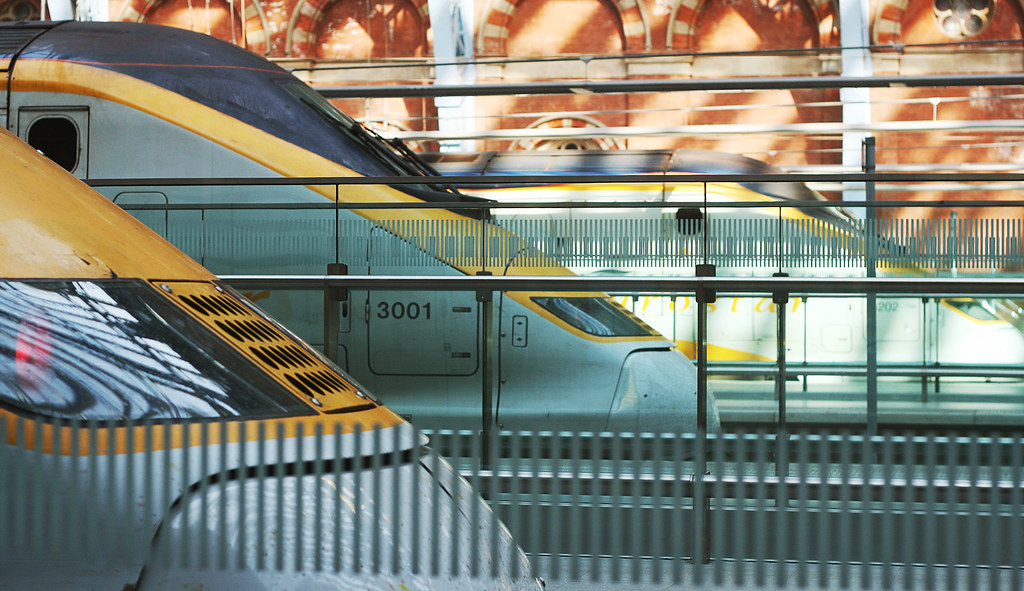
The operator, jointly managed by the UK's London & Continental Railways, France's state train operator and the Belgian national railways, [b]carried a record 9.1m passengers during 2008, up 10.3 per cent from the 8.26m it carried during 2007.
Much of the growth was a result of the opening in November 2007 of the second section of High Speed 1, the UK's first dedicated high-speed rail line.
The opening cut journey times on the core London-Paris and London-Brussels routes by around 20 minutes, giving best journey times on
London-Paris of two hours 15 minutes and on London-Brussels of one hour 51 minutes.
The new route also brought trains into St Pancras International, which is more accessible for most passengers than the previous terminus at London Waterloo.
The full-year growth, however, was markedly slower than the 18.3 per cent growth recorded in the first half of the year because of the disruption caused by the Channel Tunnel fire.
Eurostar has had to cancel one service a day in each direction between London and both Paris and Brussels because of the fire. Services take 20 minutes longer because of speed restrictions in the tunnel and the availability of only one tunnel for the last 17km of the 50km twin-bore undersea tunnel on the French side. Eurtounnel, the tunnel owner, hopes to complete repair work by mid-February.
 Eurostar's revenues grew 10.9 per cent to £664m, from £599m in 2007. The operator said the economic downturn had so far had little effect on it.
Eurostar's revenues grew 10.9 per cent to £664m, from £599m in 2007. The operator said the economic downturn had so far had little effect on it.
Richard Brown, chief executive, said the increase of 1m passengers in the year demonstrated beyond doubt that passengers preferred high-speed rail to short-haul air.

"The short-term outlook for 2009 is challenging, but the long-term prospects for Eurostar and high-speed rail are very good," he said.
===========================================================
For comparison, the entire Amtrak network has handles 28.7mn passengers. The aim of Eurostar is to have 20mn passengers over the coming few years.
Shinkansen (Japanese Bullet) Trains in London
All ready for December 2009 - The access to the Shinkansen platforms at London St Pancras.
